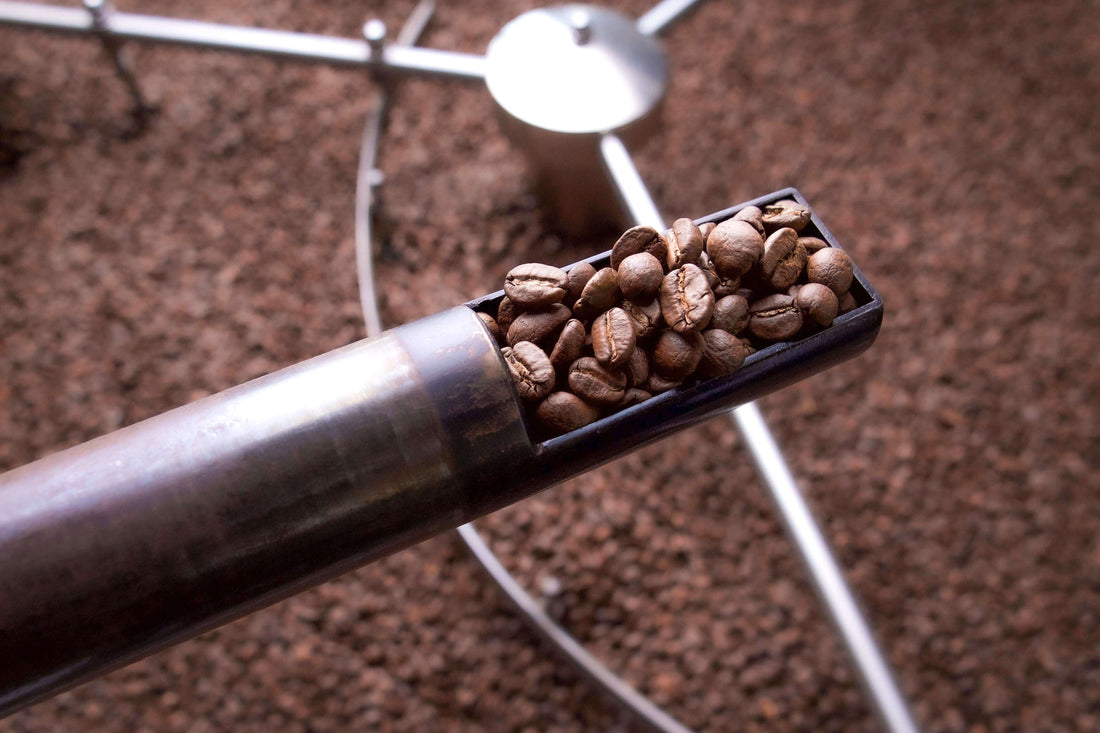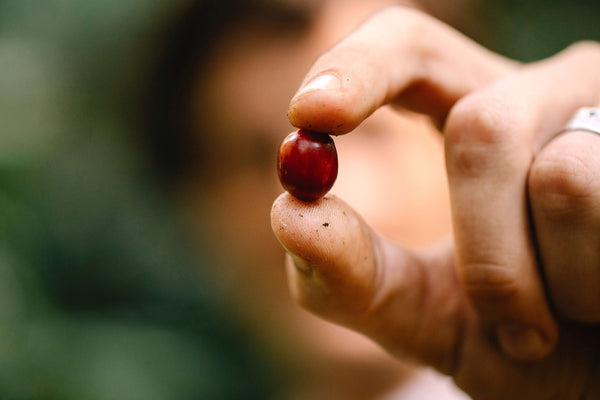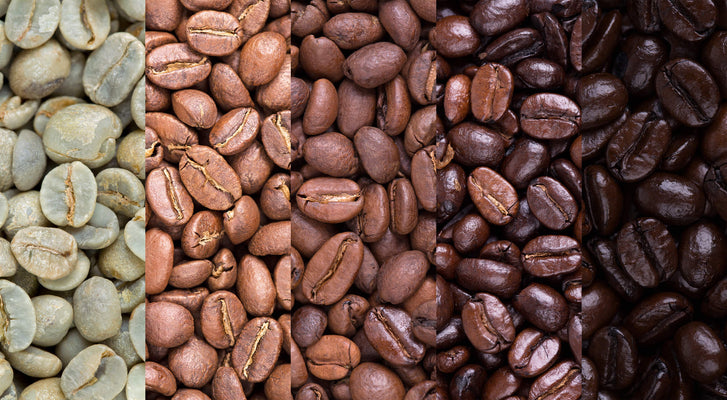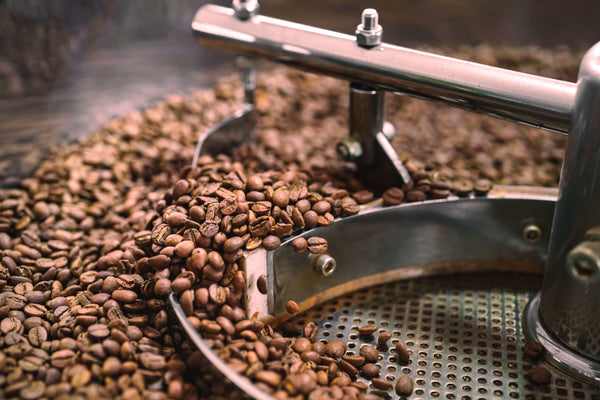
Coffee Roasting: Caramelization
tai attitude6 min read
Coffee roasting is the process of transforming the properties of green coffee beans into aromatic and flavourful roasted coffee beans; subsequently, we brew them to make the coffee (beverage) we know and love.
Coffee roasting involves complex chemical reactions occurring at varying speeds and interacting with one another. Caramelization is one of the key chemical reactions that occur during the process.
In this article, let us focus on the caramelization aspect and understand how it contributes to the aromas and flavours of coffee.
What is caramelization?
Caramelization is a pyrolytic chemical reaction that activates when sugars are highly heated. It involves the breakdown of these sugars for the formation of new compounds that give distinct aromas and flavours.
Pyrolytic: the decomposition of compounds at high temperatures.
Sugar has a sweet taste. When sugar is highly heated, it caramelises.
During caramelization, sugars physically turn brown and chemically lose their sweetness level in exchange for the formation of new aromas and flavours.
Any food containing sugar molecules, when heated to high temperatures, is capable of caramelization. Here are some examples of caramelised foods we are familiar with:
Sweets, caramel sauce, and caramelised onions, apples, carrots, and potatoes, etc.
In essence, caramelization is a chemical reaction responsible for browning (non-enzymatic) and flavour development. It produces changes in the sensory attributes of colour, aroma, and overall flavour of that food.
So, what does caramelization have to do with coffee?
 Roasted coffee beans are not commonly considered a caramelised product. It turns out it is. Our daily favourite cup of Joe is made with it.
Roasted coffee beans are not commonly considered a caramelised product. It turns out it is. Our daily favourite cup of Joe is made with it.
Caramelization in coffee roasting
For coffee, caramelization takes place during coffee roasting, which is responsible for the transformation of some of the final aromas and flavours of coffee beans.
During coffee roasting, the process continues until its latter phase, where green coffee beans are heated to about 170 °C (338 °F), which is the average point where the sugars start to caramelise.
As the temperature continues to rise from this point onward, caramelization causes sugars to begin to melt and subsequently turn brown, forming aromas and flavours.
Caramelization is a gradual chemical reaction. It will continue with heat until either the roast is ended, or all sugars have pyrolytically broken down to ashes (carbons).
Degree of caramelization
Generally, the longer the coffee beans are roasted, the higher the degree of caramelization, thus:
• The darker the shades of the coffee beans
• The more pronounced the caramelization aromas and flavours
At its core, caramelization is a pyrolytic chemical reaction trying to break down sugars. Its "endgame" nature is to result in ashes (carbons).
Therefore, a higher degree of caramelization does not always mean it is better.
Rather, a balance point for the degree of caramelization is taken into consideration by the coffee roaster. To put it in perspective:
The higher the degree of caramelization, the more sweetness is reduced in exchange for more acidity and bitterness. Overall, the coffee's sensory profile becomes more complex.
The lower the degree of caramelization, the more sweetness is preserved but less acidity and bitterness. Overall, the coffee sensory profile retains more clarity.
End products of caramelization
The formation of possible aroma- and flavour-responsible compounds (referred to as end products) in the final roasted coffee beans can be vastly different; it ultimately comes down to two key factors:
i) the sugar composition (precursor) of the green coffee beans
ii) how the caramelization is modulated and the roast level
Collectively, these two factors determine the degree of caramelization.
The main precursor is sucrose
Green coffee beans (which technically are seeds) have a very low natural sugar content.
Part of the art of coffee roasting is caramelising these precious sugars for deliciousness.
Interestingly, over 90% of the sugar in green coffee beans (of Arabicas) is in the form of sucrose, signifying its importance.
Sucrose, in particular, is a type of sugar that starts to caramelise at 186 °C (367 °F).
Caramelization thermally decomposes sucrose into smaller sugar types, such as glucose and fructose.
Glucose and fructose then undergo a condensation reaction (losing their water molecules), resulting in the formation of furan with nutty notes, maltol with caramel, and acetic acid with sourness.
 An illustration of caramelization. Image from the attached research link.
An illustration of caramelization. Image from the attached research link.
Not just these three, but there are many more end products that can be formed via caramelization.
The exact amount of end product possible in coffee roasting still remains unknown, so more research is needed in this space.
To help ease understanding, we have grouped a table below for what we know so far; these are qualitative descriptions intended as general guidelines.
 Please zoom in to read or download this table.
Please zoom in to read or download this table.
Depending on both the composition and abundance of end products, these collectively give a coffee its distinctive aromas and flavours.
The key takeaway:
Caramelization is the pyrolysis of sugars. It is a chemical reaction that decreases the total sugars (>90% are sucrose) and increases the aforementioned new compounds.
It sounds counter-intuitive, but on a sensory level, it does lead to heightened perceived sweetness, aromas, and flavours in the final coffee (beverage).
Caramelization and roast levels
Green coffee beans can be roasted to different roast levels (a.k.a. roast spectrums), ranging from light to medium to dark roasts. This is a decision by the coffee roaster, often based on output quality and business.
On the other hand, consumers have the option to go for the roast level they enjoy.
As we now understand, the degree of caramelization helps shape how much sweetness, acidity, bitterness, clarity, and complexity the roasted coffee beans can have.
As such, light, medium, and dark roasts each have different degrees of caramelization, thereby different sets of end products in them:
Light roasts, such as Cinnamon Roast or New England Roast, undergo a lesser degree of caramelization, retaining higher perceived sweetness and overall higher flavour clarity.
Medium roasts, like American Roast or City Roast, undergo a moderate degree of caramelization, exhibiting moderate perceived sweetness and overall balance.
Dark roasts, such as Full City, Vienna, French, or Italian Roasts, undergo an extensive degree of caramelization and beyond, leading to a lower perceived sweetness and overall higher flavour complexity.
For more about roast levels, read this publication.
Caramelization vs. the Maillard reaction
To understand caramelization more, the Maillard reaction is worth mentioning.
Caramelization and the Maillard reaction are two quintessential chemical reactions happening during coffee roasting, each responsible for different sets of aroma and flavour compounds transformation.
Similarly,
Each chemical reaction induces its own browning (non-enzymatic) on coffee beans, although the causation is different.
The browning of caramelization is because of the formation of end products of caramelans, caramelens, and caramelins.
The browning of the Maillard reaction is because of the formation of an end product known as melanoidins.
Both chemical reactions happen concurrently, compounding the browning effect on the coffee beans, which leads to much quicker darkening, especially in the latter phase of coffee roasting.

The browning of coffee beans by caramelization and the Maillard reaction.
Distinctively,
Caramelization is a series of chemical reactions between sugars and their intermediate compounds. Activation occurs with higher heat around 170 °C (338°F).
The Maillard reaction is a series of chemical reactions with sugars, proteins, and other intermediate compounds. Activation occurs with lower heat around 140 °C (280°F).
Read more about the Maillard reaction in this publication.



